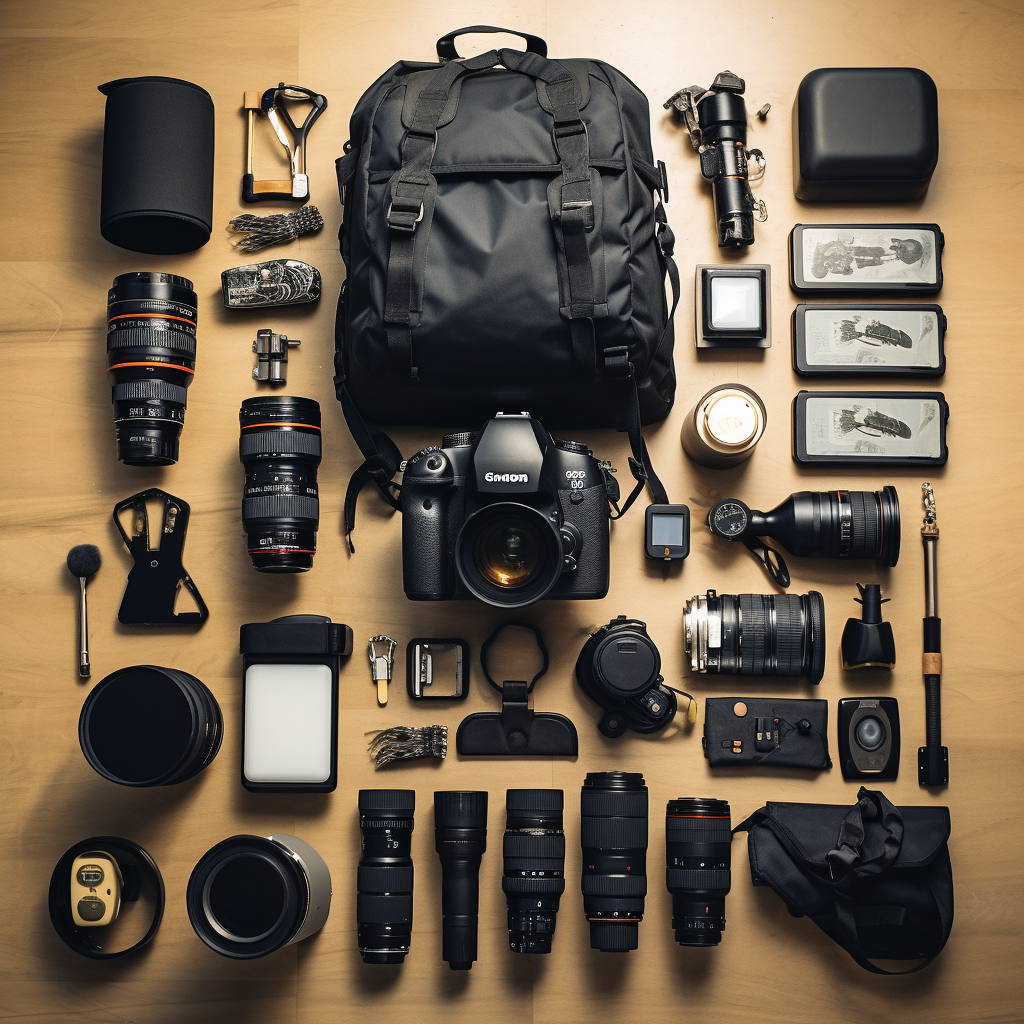Please note this post may contain affiliate links picked by me (Jay) that I have deemed may be of interest or relevant to you the reader of this.
These links do not affect the cost of the thing if you decide to purchase but i may get a little money if you choose to purchase.
For more information on my affiliate link policy click here.
How To Choose The Right Lens For Your Camera
Introduction
Hey there, fellow Photography Junkies! Jay here, your friendly neighborhood camera enthusiast. Today, we’re diving into the exciting world of lenses and how to choose the perfect one for your camera. Whether you’re a beginner or an experienced photographer, selecting the right lens can make a world of difference in your photography journey. So, let’s grab our gear, put on our lenses (pun intended), and explore the ins and outs of lens selection!
Understanding Lens Basics
Before we jump into the nitty-gritty details, let’s establish a solid foundation. A camera lens is like the eye of your camera, allowing light to pass through and focus onto your camera’s sensor. It consists of several elements that work together to create sharp, clear images. These elements include the aperture, focal length, and lens construction. By understanding these basic components, you can make more informed decisions when choosing a lens.
The aperture controls the amount of light that enters the camera, and it is represented by an f-number. A lower f-number, such as f/1.8, indicates a wider aperture and allows more light to enter the lens. This is useful in low-light situations or when you want to achieve a shallow depth of field. Focal length, measured in millimeters (mm), determines the magnification and angle of view of the lens. Shorter focal lengths capture a wider field of view, while longer focal lengths bring distant subjects closer.
Lens construction refers to the quality and design of the lens. Factors such as the number of lens elements, lens coatings, and the presence of specialized glass elements affect image quality, sharpness, and distortion. Understanding these basics will help you make more informed decisions when choosing a lens.
Choosing the Right Lens Type
When it comes to lens types, we have prime lenses and zoom lenses. Prime lenses have fixed focal lengths, meaning you can’t zoom in or out. On the other hand, zoom lenses provide the flexibility to adjust the focal length, enabling you to zoom in and out without changing lenses. Prime lenses often offer wider maximum apertures, resulting in better low-light performance and more control over depth of field. Zoom lenses, on the other hand, offer versatility, allowing you to cover a range of focal lengths with a single lens.
Prime lenses are often favored for their excellent image quality, compact size, and wide aperture options. They encourage photographers to think creatively and move around to find the best composition. They can be great for portrait photography, where a wider aperture can create beautiful background blur and subject separation. On the other hand, zoom lenses provide convenience and flexibility. They are ideal for situations where changing lenses quickly is impractical or when you need to cover a wide range of focal lengths, such as in travel or event photography.
When choosing between prime and zoom lenses, consider your shooting style, subjects of interest, and the level of convenience you desire.
Focal Length and Perspective
Focal length plays a crucial role in determining the perspective and field of view in your photographs. It affects how the subject appears in relation to the background and influences the visual storytelling of your images.
Shorter focal lengths (wide-angle lenses) capture a wider perspective, making them ideal for landscapes, architecture, and environmental portraits. These lenses add a sense of depth and can create dramatic compositions. When shooting with wide-angle lenses, get close to your subject to emphasize its presence in the frame and experiment with angles to create dynamic images.
On the other hand, longer focal lengths (telephoto lenses) bring distant subjects closer and are great for portraits, wildlife, and sports photography. Telephoto lenses compress the scene, allowing you to isolate subjects and capture details that might be difficult to reach with shorter focal lengths. When shooting with telephoto lenses, consider the background and use a wide aperture to blur distractions and create pleasing bokeh.
Understanding the impact of focal length on perspective will help you choose the right lens for the type of photography you enjoy.
Aperture and Depth of Field
The aperture controls the amount of light entering your camera and affects your image’s depth of field. It is represented by an f-number, such as f/1.8 or f/16.
A wider aperture (small f-number) creates a shallow depth of field, allowing you to isolate your subject and blur the background. This is perfect for portraits or artistic shots where you want the subject to stand out. Prime lenses with wide apertures, such as a 50mm f/1.8 lens, are often favored for their ability to produce beautiful bokeh and subject separation. When shooting wide open, pay attention to focus accuracy since the shallow depth of field can make focusing critical.
Conversely, a narrower aperture (higher f-number) results in a greater depth of field, ensuring more of your scene remains in focus. This is ideal for landscape photography, where you want everything from the foreground to the background to be sharp and detailed. When shooting landscapes, consider using a tripod and adjusting the aperture to achieve the desired depth of field. It’s important to note that narrower apertures require more light, so you may need to use slower shutter speeds or increase ISO in low-light situations.
Experimenting with different apertures will allow you to explore creative possibilities and control how your images are perceived.
Lens Compatibility with Your Camera
Not all lenses are compatible with every camera. Before making a purchase, ensure that the lens you have your eye on is compatible with your camera’s mount. Different camera manufacturers may have their own lens mounts, so double-check compatibility to avoid any disappointment. However, it’s worth noting that many third-party lens manufacturers produce lenses with various mounts, providing options for different camera brands.
Consider researching lens options specific to your camera brand and model. Check the manufacturer’s website or consult reliable sources to ensure compatibility and to explore the range of lenses available. Additionally, consider factors like autofocus compatibility, electronic communication between the lens and camera, and image stabilization capabilities, as these can vary between camera models and lens manufacturers.
Being aware of lens compatibility ensures that you can confidently invest in lenses that will work seamlessly with your camera.
Considerations for Different Photography Genres
Different genres of photography have specific lens requirements. While there are no hard and fast rules, understanding the general preferences within each genre can guide you in choosing suitable lenses.
- Portrait Photography: Prime lenses with wide apertures, such as 50mm or 85mm, are often favored for portraits. They provide excellent subject separation, flattering perspective, and beautiful bokeh.
- Landscape Photography: Wide-angle lenses, typically in the range of 24mm to 35mm, are popular for capturing expansive landscapes. They allow you to include more of the scene and create a sense of depth.
- Wildlife and Sports Photography: Telephoto lenses with longer focal lengths, such as 300mm or 400mm, are essential for capturing distant subjects in detail. They allow you to bring wildlife, athletes, or action closer, ensuring you don’t disturb the scene.
- Street Photography: Compact prime lenses in the range of 35mm to 50mm are often preferred for their versatility, inconspicuousness, and ability to capture the essence of everyday life.
These are just general recommendations, and personal preferences may vary. Consider the type of photography you enjoy and the perspective you want to achieve when selecting lenses for specific genres.
Budget-Friendly Options
While lenses can be a significant investment, there are budget-friendly options available that deliver great performance. Consider purchasing used lenses from reputable sources, as they can be significantly cheaper than brand-new ones. Look for lenses that are in good condition, have been well-maintained, and come from reliable sellers.
Additionally, third-party lens manufacturers offer lenses at competitive prices. Companies like Sigma, Tamron, and Tokina produce high-quality lenses that are often more affordable than their brand-name counterparts. These lenses can provide excellent image quality, functionality, and compatibility with various camera systems. Don’t shy away from exploring third-party options when building your lens collection.
Remember, it’s not always about having the most expensive lenses. It’s about finding the ones that suit your needs and allow you to express your creativity.
Renting Lenses: An Affordable Solution
Sometimes, you may want to experiment with a lens before committing to a purchase. This is where lens rental services come in handy. Many camera stores and online platforms offer lens rental services, allowing you to try out various lenses for a fraction of the cost. Renting lenses enables you to gain hands-on experience, understand how different focal lengths and apertures work for your style of photography, and make informed decisions before investing in a specific lens.
By renting lenses, you can test their performance in real-world scenarios, see how they handle in different lighting conditions, and determine if they meet your expectations. It’s a cost-effective way to expand your lens arsenal and discover the lenses that truly resonate with your photography style.
Conclusion
Choosing the right lens for your camera is an essential step in developing your photography skills and achieving the desired results. By considering factors such as lens type, focal length, aperture, compatibility, and your specific photography genre, you can make informed decisions that align with your creative vision. Don’t be afraid to explore different options within your budget, and consider renting lenses to gain hands-on experience.
With the right lens by your side, you’ll be well-equipped to capture stunning images and unlock your creative potential.
So, fellow Junkies, go forth and choose your perfect lens – the world of photography awaits you!
Happy shooting, Jay

















One thought on “How To Choose The Right Lens For Your Camera”
Comments are closed.